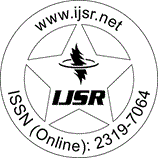Downloads: 28 | Views: 237 | Weekly Hits: ⮙1 | Monthly Hits: ⮙17
Analysis Study Research Paper | Computer Science and Information Technology | India | Volume 14 Issue 1, January 2025 | Popularity: 7.7 / 10
Quantitative Analysis of Kinematic Asymmetry in Push-Ups and Its Correlation with Muscular Fatigue
Felix Sugiyama Stegemann, Pratyush Pandey
Abstract: This study investigates the relationship between kinematic asymmetry and muscular fatigue during push-ups. Kinematic asymmetry refers to the differences in joint movements (e.g., elbows and wrists) between the left and right sides of the body. This research aims to analyse these asymmetries and explore their relationship to fatigue development. A custom push-up pose estimation tool, built in Python using OpenCV and Mediapipe, was developed to track and measure joint angles in real-time while participants performed push-ups. Data was then collected across multiple repetitions until fatigue prevented the participants from maintaining proper form. The results showed a significant increase in both elbow and wrist asymmetry as participants progressed through repetitions, indicating that fatigue impairs the ability to maintain symmetrical movement patterns. A strong positive correlation (R? = 0.85) was observed between elbow asymmetry and repetition count, while a moderate correlation (R? = 0.65) was found for wrist asymmetry. These findings suggest that kinematic asymmetry can serve as an early indicator of fatigue, providing valuable insights for trainers and athletes to detect performance decline and adjust training programs accordingly. The study highlights the importance of monitoring joint angles during push-ups to prevent uneven muscle development and reduce the risk of injury. Applying real-time feedback systems, such as the custom pose estimation tool developed in this research, athletes and participants can possibly improve their form and optimize training outcomes. This research contributes to the growing body of knowledge on kinematic asymmetry and its implications for athletic performance, injury prevention, and rehabilitation.
Keywords: kinematic asymmetry, muscular fatigue, push-up performance, injury prevention, pose estimation, biomechanics, fatigue assessment, rehabilitation, training optimization, elbow and wrist asymmetry, performance monitoring, computer vision in sports, fatigue threshold, strength training
Edition: Volume 14 Issue 1, January 2025
Pages: 719 - 724
DOI: https://www.doi.org/10.21275/SR25117185949
Make Sure to Disable the Pop-Up Blocker of Web Browser
